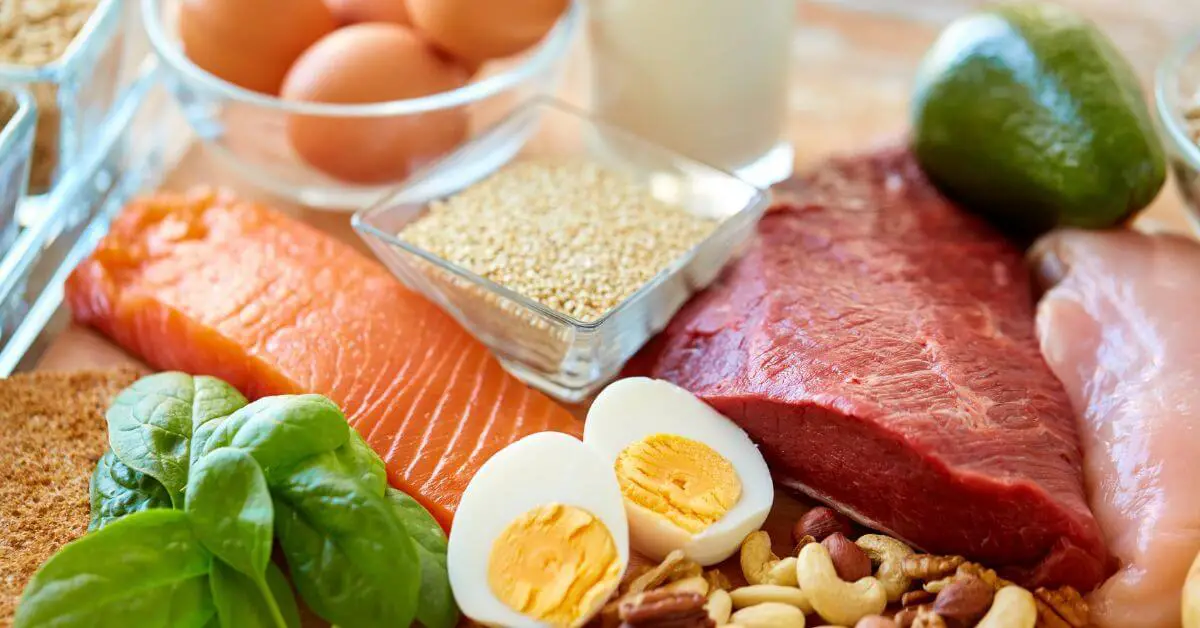Chicken, a staple in many diets worldwide, stands out as a popular protein choice. Renowned for its versatility and nutritional value, chicken offers a range of options from breast to thigh, each with its unique protein content. This article delves into the various parts of chicken, focusing on their protein levels to guide health-conscious individuals and fitness enthusiasts in making informed dietary choices.
Nutritional Profile of Chicken
The nutritional profile of chicken is diverse, encompassing a range of macronutrients, vitamins, and minerals that contribute to its status as a highly valued food item in various diets. Understanding these nutritional aspects is crucial for appreciating the health benefits chicken offers.
- Macronutrients in Chicken:
- Protein: Chicken is predominantly known for its high protein content, which varies among different parts. Protein is essential for muscle growth, repair, and overall body maintenance.
- Fats: The fat content in chicken varies, with darker cuts like thighs and drumsticks being higher in fat compared to leaner parts like the breast. The type of fat also matters, with chicken containing a mix of saturated and unsaturated fats.
- Carbohydrates: Chicken is naturally low in carbohydrates, making it a suitable option for low-carb diets.
- Vitamins and Minerals Present in Chicken:
- B Vitamins: Chicken is a good source of several B vitamins, including niacin (B3), pyridoxine (B6), and cobalamin (B12). These vitamins play vital roles in energy production, brain function, and red blood cell formation.
- Minerals: It provides essential minerals such as phosphorus, which is important for bone health, and selenium, known for its antioxidant properties.
- Iron: While not as high as in red meat, chicken still contributes a significant amount of iron, especially in darker cuts.
The nutritional value of chicken makes it a versatile and beneficial component of a balanced diet. Whether consumed for muscle building, weight management, or general health, chicken provides a substantial nutritional punch that can be tailored to meet various dietary needs and preferences. Incorporating chicken into meals, therefore, not only adds variety and flavor but also ensures a rich intake of essential nutrients.
Chicken Breast: The Protein Powerhouse
Chicken breast stands out as an exceptional source of protein, earning its reputation as a protein powerhouse. Health and fitness enthusiasts particularly favor this part of the chicken for its nutritional profile and cooking versatility.
-
Analyzing the Protein Content in Chicken Breast:
- Lean muscle predominantly composes the chicken breast, offering a high concentration of protein. Depending on its size, a typical chicken breast can provide about 26-31 grams of protein. Studies, such as those referenced on PubMed Central, highlight its high protein-per-gram ratio, making it an efficient choice for meeting daily protein requirements.
- The protein in chicken breast is complete, containing all nine essential amino acids necessary for the human body, crucial for muscle repair, growth, and overall health.
-
Comparing Chicken Breast with Other Chicken Parts:
- Chicken breast contains less fat and fewer calories compared to other parts like thighs or drumsticks. This makes it an ideal choice for increasing protein intake without significantly upping calorie and fat consumption.
- The lower fat content in chicken breast also means it contains less saturated fat compared to darker cuts, aligning well with dietary guidelines that recommend limiting saturated fat intake.
-
Health Benefits of Chicken Breast:
- Weight Management: The high protein and low-fat content of chicken breast make it beneficial for weight loss and management. Protein induces satiety, reducing overall calorie intake by keeping you fuller for longer.
- Muscle Building and Maintenance: The rich protein content aids in muscle building and maintenance, making it a popular choice among athletes and bodybuilders.
- General Health: Chicken breast is not only low in fat but also in cholesterol, contributing to reduced risks of heart disease, as noted in studies like those on PubMed Central.
In summary, chicken breast is a highly nutritious part of the chicken, offering substantial health benefits, especially for those focusing on protein intake, weight management, and healthful eating. Its versatility in recipes further adds to its appeal, making it a staple in various cuisines and diets. For creative ways to incorporate chicken breast into various diets, check out ‘Versatile & Healthy: Adapting Thin Chicken Breast Recipes for Every Diet‘ for inspiration.
Chicken Thighs and Drumsticks: A Closer Look

Chicken thighs and drumsticks offer a unique nutritional profile that deserves attention beyond the more commonly highlighted chicken breast. These parts of the chicken provide a balance of nutrients, especially protein and fat, and are popular for their rich flavor and juicy texture.
- Protein Content in Thighs and Drumsticks:
- Chicken thighs and drumsticks are rich in protein, though they contain slightly less than the breast. Depending on the size and whether the skin is included, a typical serving of these parts can provide about 13-19 grams of protein.
- These parts contain complete protein, which includes all essential amino acids necessary for bodily functions like muscle repair and growth.
- Nutritional Comparison with Chicken Breast:
- Compared to chicken breast, thighs and drumsticks have a higher fat content. This higher fat contributes to their moist texture and robust flavor, making them favorites in various culinary traditions.
- The fat content is a mix of saturated and unsaturated fats, and the presence of skin and cooking methods can further influence this.
- Cooking Methods Affecting Protein Content:
- Cooking methods like grilling, roasting, and baking at high temperatures can help retain most of the protein in thighs and drumsticks while rendering out some of the fat, especially if you remove the skin.
- Methods like frying or using heavy sauces can add additional fat and calories, which might be a consideration for those monitoring their calorie intake.
In conclusion, chicken thighs and drumsticks offer a nutritious and flavorful alternative to chicken breast, providing essential proteins along with a richer flavor profile. Their higher fat content can be a beneficial source of energy, especially for those not strictly limiting fat intake. Understanding these differences helps individuals make informed choices based on their dietary preferences and health goals.
Other Chicken Parts: Wings, Legs, and More
Chicken wings and legs, though less commonly discussed than the breast or thigh, also contribute significantly to the bird’s overall nutritional value. These parts offer unique benefits in terms of protein content, nutritional value, and culinary uses.
-
Protein Content in Less Common Parts like Wings and Legs:
- Chicken wings, often associated with indulgent recipes, are flavorful and contain a decent amount of protein, though they are higher in fat compared to leaner parts like the breast.
- Chicken legs, which include both the thigh and drumstick, offer a balance of protein and fat. They are particularly favored for their richer flavor and tender texture, making them a versatile ingredient in various dishes.
-
Nutritional Value and Culinary Uses:
- Beyond protein, chicken wings and legs provide essential nutrients like iron and B vitamins, contributing to a balanced diet.
- In terms of culinary uses, wings are popular in fried and baked dishes, often served with various sauces and seasonings. They are a staple in many cultures’ cuisines, celebrated for their crispy skin and tender meat.
- Chicken legs are versatile and can be cooked in numerous ways, including roasting, grilling, and slow-cooking. They absorb flavors well, making them suitable for a range of recipes from hearty stews to flavorful grills.
Each part of the chicken, including wings and legs, offers a different culinary experience and nutritional profile. Understanding these differences can help in making more informed choices based on dietary needs and cooking preferences. Whether used in traditional recipes or innovative culinary creations, these parts of the chicken provide both flavor and nutrition, making them valuable components of a varied and balanced diet. For a savory twist on chicken, try the recipe from ‘French Onion Chicken: Savory Delights for Every Kitchen‘.
Cooking Methods and Protein Retention
The cooking method chosen for chicken can significantly influence its protein content and overall nutritional value. Protein, being a heat-sensitive nutrient, can be affected by temperature and cooking duration. Understanding how different cooking methods impact protein retention is key for those looking to maximize the nutritional benefits of chicken.
-
How Cooking Methods Affect Protein Content:
- High Heat Methods: Grilling, broiling, and baking at high temperatures can cause a slight reduction in protein content due to the denaturation of proteins. However, these methods are generally effective in retaining most of the protein.
- Moist Heat Methods: Boiling and poaching chicken are gentle on proteins. While these methods may not cause significant protein loss, they can lead to the leaching of water-soluble nutrients into the cooking liquid.
- Frying: While frying chicken can retain protein, it significantly increases the fat content, which might not be desirable for those following a low-fat diet.
-
Best Practices for Cooking Chicken for Maximum Protein Retention:
- Avoid Overcooking: Overcooking can lead to a loss of moisture, making the chicken dry and potentially reducing its protein quality. Cooking chicken just until it reaches the safe internal temperature of 165°F (75°C) is advisable.
- Use Gentle Cooking Methods: Methods like steaming or poaching at lower temperatures can help preserve proteins and other nutrients.
- Marinating: Marinating chicken before cooking can not only enhance flavor but also help in retaining moisture during cooking, indirectly aiding in protein retention.
- Resting the Meat: Allowing chicken to rest for a few minutes after cooking helps redistribute the juices, which can contain some proteins, throughout the meat.
In summary, while most cooking methods do not drastically reduce the protein content in chicken, choosing the right method and practicing good cooking techniques can help ensure that you get the most nutritional value from your chicken dishes. Balancing these methods with personal dietary needs and preferences is key to enjoying chicken in a healthy, nutritious way. Explore ‘Thin-Sliced Chicken Breast Recipes: Cooking Tips‘ for innovative ways to cook chicken breast while retaining its protein content.
Chicken vs. Other Protein Sources

When considering protein sources, chicken is often compared with other meats and plant-based proteins. Each source offers unique benefits in terms of nutritional content, bioavailability, and amino acid profiles. Understanding these differences can help individuals make informed choices that align with their dietary needs and preferences.
-
Comparison with Other Meats:
- Beef and Pork: These meats are higher in iron and B vitamins compared to chicken. However, they also tend to have higher saturated fat content, especially in fattier cuts.
- Fish: Fish is not only a good source of protein but also provides essential omega-3 fatty acids. The protein in fish is easily digestible and contains important amino acids.
- Turkey: Similar to chicken in many ways, turkey is another lean protein source, often lower in fat than chicken, especially the breast.
-
Comparison with Plant-Based Proteins:
- Legumes and Beans: These are high in protein and fiber but are often not complete proteins, meaning they don’t contain all essential amino acids. However, combining different plant proteins can provide a complete amino acid profile.
- Tofu and Tempeh: Made from soybeans, these foods are complete proteins and are good alternatives to animal proteins. They are also lower in saturated fats.
-
Bioavailability and Amino Acid Profiles:
- Bioavailability: Animal proteins like chicken have a higher bioavailability compared to plant-based proteins. This means the body can use a higher percentage of the ingested protein.
- Amino Acid Profiles: Chicken is a complete protein, containing all nine essential amino acids necessary for the human body. While some plant-based proteins also offer complete profiles, many require combining different food sources to achieve this.
In conclusion, while chicken is a highly beneficial source of complete protein, other meats and plant-based proteins also offer valuable nutritional benefits. The choice between these sources should be based on individual health goals, dietary restrictions, and ethical considerations. Understanding the bioavailability and amino acid profiles of these proteins can guide in achieving a balanced and nutritious diet.
FAQs
-
Which part of the chicken has the most protein?
- The chicken breast is the leanest part and has the most protein by weight. This makes it ideal for those looking to lose weight, maintain muscle mass, and improve overall health. A typical chicken breast can provide about 31 grams of protein, making it a top choice for high-protein diets. Source: Healthline
-
Is chicken breast healthier than other parts of the chicken?
- Yes, chicken breast is considered the healthiest choice among chicken parts. It has a low-fat content, high-quality lean protein, and essential vitamins, making it a nutritious option for a balanced diet.
-
How does the protein in chicken compare to other meats?
- Chicken, especially the breast, is comparable to other lean meats in terms of protein content. For example, a whole chicken contains about 24 grams of protein per serving, while a chicken breast offers 31 grams. This is similar to lean cuts of beef and pork, though chicken tends to be lower in saturated fat.
-
What are the benefits of eating chicken for protein?
- Eating chicken for protein offers several benefits, including muscle growth, weight management, and overall health improvement. Chicken is a complete protein source, providing all essential amino acids. It’s also versatile and can be included in various diets.
-
Can chicken be part of a weight loss diet?
- Absolutely. Chicken, particularly the breast, is an excellent choice for weight loss diets due to its high protein and low-fat content. Protein helps in satiety, reducing overall calorie intake, and chicken can be prepared in many healthy ways to suit a weight loss plan.
Conclusion
Chicken, in its various forms, is a versatile and nutritious choice suitable for diverse diets. Each part, from the protein-packed breast to the flavorful thighs, drumsticks, wings, and legs, offers unique nutritional benefits:
- The breast is ideal for muscle building and weight management, thanks to its high protein and low-fat content.
- Thighs and drumsticks provide a balance of protein and fat, perfect for those seeking richer flavors.
- Wings and legs, though often linked to indulgent dishes, still contribute essential nutrients and culinary versatility.
Understanding the impact of cooking methods on chicken’s nutritional value can further guide healthier choices. Overall, chicken’s universal appeal, nutritional benefits, and adaptability make it a staple in various cuisines and diets worldwide.
